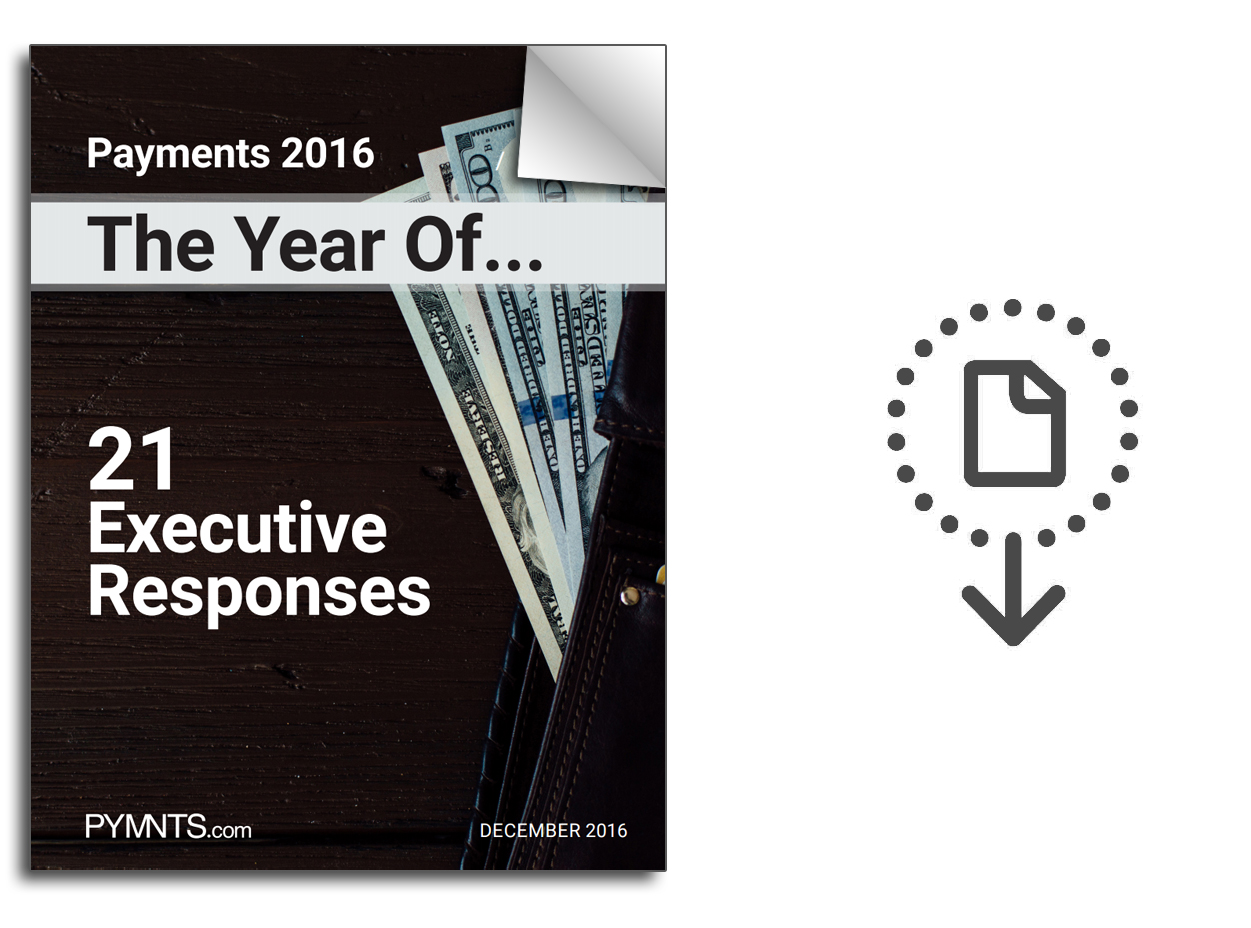Payments 2016: The Year Of The Emergence Of The Global Citizen

The global economy is on the rise – not only driving increased commerce opportunities around the world, but a greater impact on citizens that need to make high-value payments happen no matter what country they’re in. Mike Massaro, CEO of Flywire, share why this year wasn’t just about serving the growing population of Global Citizens, but delivering seamless payments experiences that can help make their lives either, whether it’s a student paying for tuition or a patient submitting a payment to an overseas health facility.
PYMNTS consulted 21 payments executives from across the industry to share their insights on the biggest takeaways from 2016 as part of the “Payments 2016, The Year Of…” eBook. We posed the same question to each executive:
If you had to answer the question, Payments was the year of …, how would you answer, and how does your answer change your world — and the world of payments, more broadly?
Here is the response from Mike Massaro, CEO of Flywire …
Payments 2016: The Year Of The Emergence Of The Global Citizen
The world of global payments is evolving rapidly — driven by an increasingly global economy, expanding consumer buying power in regions like Asia and South America, rising adoption of digital payment methods and increasing concerns over security and transparency.
Flywire deals primarily in large, global payments — a segment that has grown dramatically in recent years. One particular trend we’ve seen emerge in 2016 that impacts us directly is the rise of a new “global citizen” demographic.
2016 saw more people transacting across borders in larger sums than ever before. This growing demographic does not consider borders in terms of lifestyle, access or travel. These global citizens spend more than ever on goods and services outside of their home countries and are making large cross-border payments with increasing frequency — on education for their children, medical care for themselves and their family members, real estate, luxury items, and other offerings that bring diversity and culture to their life experience.
All these transactions involve large, cross-border payments, which are typically complex, non-transparent and fraught with challenges for both the payer and payee. These transactions can be especially stressful when dealing with important life events such as college education, health procedures or real estate acquisitions. Businesses looking to appeal to this growing segment have to take steps to reduce the friction in today’s cross-border payment process.
Speed is important, but it is not the only driver for participants in these transactions. The top priority is ensuring the payment gets to the institution on the other end. The certainty of funds is also critical to the receiving institution — assurance that the amount owed is the amount received, along with the data that goes with it to reconcile their own ledger.
Convenience is another major factor. As global citizens make more cross-border transactions, they expect convenient, cost-efficient and transparent options for payments. Easy, online access is an absolute must, as is the availability of familiar and local payment options.
Security is also important. Both payers and payees are looking for protection against fraud and assurances of compliance with any international regulations. With governments’ increased focus on cutting off financing sources to potential terrorists, large-sum cross-border payments are subject to much greater scrutiny.
There is also demand for related support services. With consumers around the world making large-sum payments from different time zones, the number and frequency of payment-related questions and inquiries will rise — at all hours and in a variety of languages. Schools, hospitals, tax agencies and others are not necessarily equipped to be in that business.
The opportunity is very real. The international education market is estimated to be $53 billion worldwide in 2016 and 2017. Over 1 million international students studied at U.S. colleges and universities alone in the 2015–2016 academic year. And another 600,000 studied in Europe and Australia. Not surprisingly, the fastest-growing places of origin for international students are China, India and Korea.
Medical care is another prime spending area for this segment. Industry groups estimate as much as $40 billion per year is spent each year by patients traveling outside of their home countries for care. And it is growing at 15 to 25 percent per year.
As Flywire’s ambition to serve these global citizens expands, so must we. This includes extending our global payment platform to address new types of transactions and new payment corridors while continuing to improve the speed, transparency, efficiency, choice and security of our payment services. We are also expanding our international presence in Europe and Asia-Pacific to better serve our customers at both the point of origin and destination. This includes expanding our banking relationships in different regions to continue to take friction out of the international payment process.
2106 has been a great year for the growth of the global citizen. And we expect more of the same in 2017.
. . . . . . . . . . . . . .

